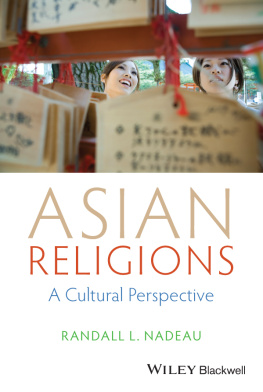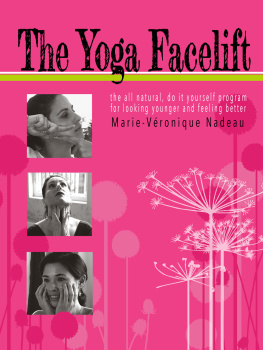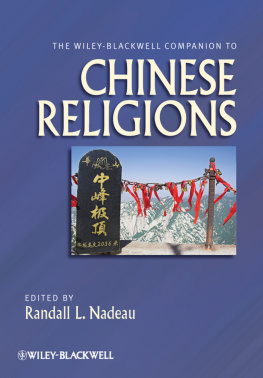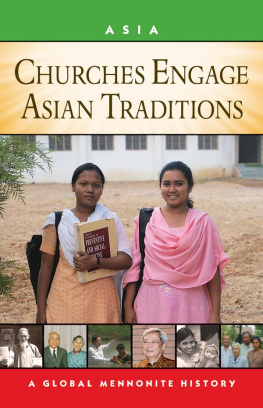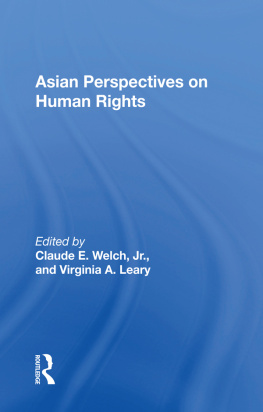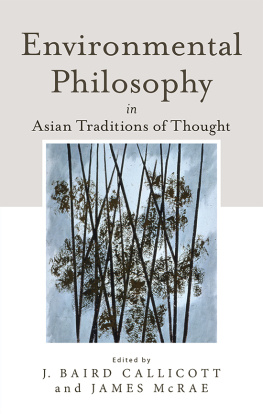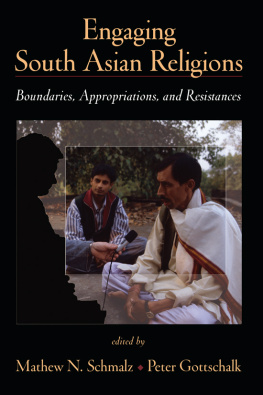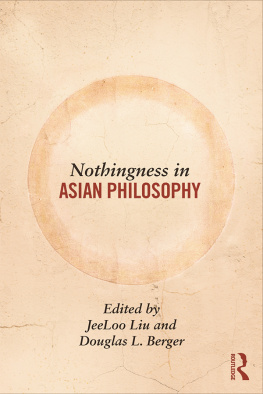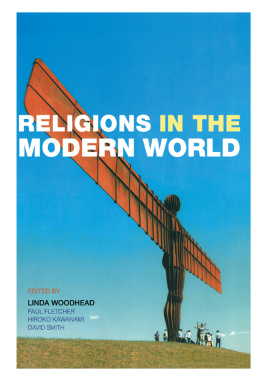
Table of Contents
Praise for Asian Religions: A Cultural Perspective
This book is a unique introduction to Asian religions, in that it combines the scholarly rigor of an established historian of Asian religions with the willingness to engage empathetically with the traditions and to suggest that readers do the same. Its focus is on the traditions in the modern world and their spiritual and experiential dimensions. It takes seriously the possibility that Asian religions, understood in their own contexts (not as mere screens on which to project Western needs and desires), can offer viable options to those in other cultures who may be seeking for meaning beyond the traditions into which they were born.
Joseph A. Adler, Kenyon College
Randall L. Nadeau has accomplished what only a few have tried, but which has been much needed in the study of religions. He has written a genuinely novel approach to the religions of Asia. The goal of the book is not primarily historical or phenomenological the volume is designed to stimulate self-reflection and personal engagement to the wired generation reader, who wants to find out what kinds of spiritual resources are meaningful for them. The approach is more cultural than theological; practical than abstract; behavioral than conceptual; embedded than distinctive. This is a work that should find its way into Asian humanities, history, religion, and civilization courses.
Ronnie Littlejohn, Belmont University
This edition first published 2014
2014 John Wiley & Sons, Ltd
Registered Office
John Wiley & Sons, Ltd, The Atrium, Southern Gate, Chichester, West Sussex, PO19 8SQ, UK
Editorial Offices
350 Main Street, Malden, MA 02148-5020, USA
9600 Garsington Road, Oxford, OX4 2DQ, UK
The Atrium, Southern Gate, Chichester, West Sussex, PO19 8SQ, UK
For details of our global editorial offices, for customer services, and for information about how to apply for permission to reuse the copyright material in this book please see our website at www.wiley.com/wiley-blackwell.
The right of Randall L. Nadeau to be identified as the author of this work has been asserted in accordance with the UK Copyright, Designs and Patents Act 1988.
All rights reserved. No part of this publication may be reproduced, stored in a retrieval system, or transmitted, in any form or by any means, electronic, mechanical, photocopying, recording or otherwise, except as permitted by the UK Copyright, Designs and Patents Act 1988, without the prior permission of the publisher.
Wiley also publishes its books in a variety of electronic formats. Some content that appears in print may not be available in electronic books.
Designations used by companies to distinguish their products are often claimed as trademarks. All brand names and product names used in this book are trade names, service marks, trademarks or registered trademarks of their respective owners. The publisher is not associated with any product or vendor mentioned in this book.
Limit of Liability/Disclaimer of Warranty: While the publisher and author have used their best efforts in preparing this book, they make no representations or warranties with respect to the accuracy or completeness of the contents of this book and specifically disclaim any implied warranties of merchantability or fitness for a particular purpose. It is sold on the understanding that the publisher is not engaged in rendering professional services and neither the publisher nor the author shall be liable for damages arising herefrom. If professional advice or other expert assistance is required, the services of a competent professional should be sought.
Library of Congress Cataloging-in-Publication Data is available for this title.
Hardback ISBN: 9781118471975
Paperback ISBN: 9781118471968
A catalogue record for this book is available from the British Library.
Cover image: Heian Jingu shrine, Kyoto, Japan. PhotoAlto/Corbis
Cover designer: Simon Levy
List of Figures
Travelers among mountains and streams by Fan Kuan (fl. 9901020). National Palace Museum, Taipei.
The Sanskrit word om, composed of the first and last letters of the Sanskrit alphabet, and thus representing all of the sounds of the universe.
China's cultural diaspora: Confucian cultures in East Asia.
Li: ceremony, ritual; ceremonial living, propriety, conscientiousness, personal comportment.
Statue of Confucius at the Confucian Temple in Shanghai, China.
Ren: kindness, benevolence; human-heartedness, co-humanity.
Though traditional family courtyards, around which three generations lived under one roof, are now being replaced by urban high-rise apartments, the sense of family remains central: three of the five lasting relationships are within the family.
Engraving from the anonymous History of the Church, circa 1880. Augustine of Hippo (Saint Augustine) is represented in the middle.
Confucius would not sit unless his mat was straight.
Statue depicting the legendary meeting between Confucius and Laozi.
Taiji tu (), Diagram of the Supreme Ultimate.
Ike no Taiga (, 17231776), Zhuang Zi dreaming of a butterfly.
Dao: The Path, Way, cosmic motion or principle.
Apartment complex, New Territories, Hong Kong.
Bank of China Tower, Hong Kong.
Aerial view of the National Gallery of Art's new East Building.
Yang order of production.
Yin order of overcoming.
Taoism is, increasingly, a viable religious alternative in the West.
Mural painting depicting Lord Krishna with Arjuna. Patora, Orissa, India.
Hindu temple featuring images of the Lord Krishna.
Krishna the Butter Thief: a portrait of Krishna painted on a truck in Jodhpur.
Krishna and Radha, surrounded by the gopis of Vrindavana. Painting miniature. Rajasthan, India.
Shiva-nataraja, Lord of the Dance.
Lord Shiva as Ardha-nrvara, half-male, half-female. Chola Period. Bronze Gallery, Chennai, India.
Aniconic image of Shiva as the unity of lingam and yoni.
Hand of the Buddha.
Reclining Buddha. Wat Than wall mural. Phnom Penh, Cambodia.
Feeding deer at Tdaiji Temple, Nara, Japan.
The wheel of the dharma (dharma-cakra).
Seated meditation.
Burmese monks protesting against the military government crackdown of 2007, Rangoon.
Buddhist nun, Tibet.
The Buddha Amitbha, Kamakura.
Statues of Thousand-Armed Kannon at Sanjsangend (), Kyoto.
Line of stone statues of the bodhisattva Jiz, carved by the disciples of archbishop Tenkai (15361643). Nikko, Japan.
The empty circle of Zen.
The kare-sansui (, dry landscape) rock garden at Ryanji ().
The 14th Dalai Lama.
Exiled Tibetans chant slogans in front of mock coffins as they hold pictures of Tibetans who allegedly have either died by self-immolation or were killed in a Chinese police firing during a protest march in New Delhi, India, on Sunday, January 29, 2012. More than 100 Buddhist monks, nuns, and other Tibetans have set themselves on fire in protest since February 2009, mostly in traditionally Tibetan areas of southwestern Sichuan Province.
Izanagi and Izanami, by Kobayashi Eitaku, circa 1885.
South Wind Clear Sky (). From Thirty-Six Views of Mt. Fuji (, Fugaku Sanjroku-kei), by Katsushika Hokusai ( ), 17601849.
Next page
